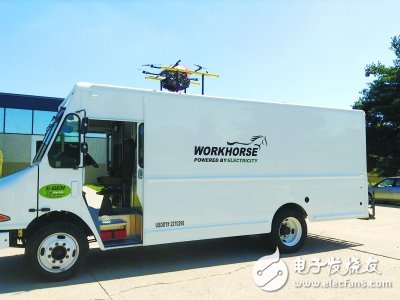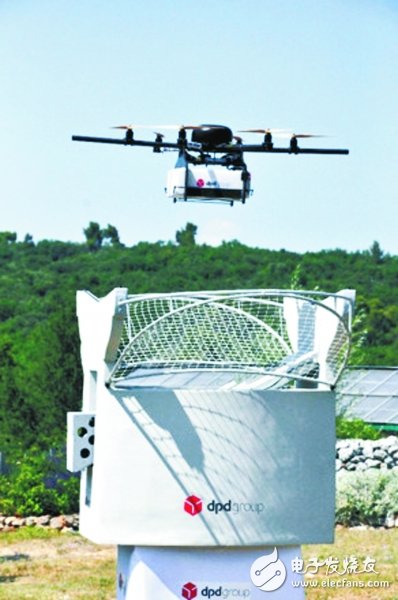This year's "Double Eleven", the sales of major e-commerce companies hit a new high, but also brought unprecedented pressure to the express delivery industry. Since the first time in 2014, China's express delivery business has exceeded 10 billion pieces and surpassed the United States. Since it became the "world's first express delivery country", the national express delivery business has exceeded 20 billion in 2015, and it has deservedly occupied this position. A number of market institutions also predict that by 2020 China's total express delivery will reach 60 billion. The drone has sent express delivery, and in recent years it has become a topic of concern. Then, from a world perspective, what step did the drone deliver to express delivery? On November 10th, 2016, the villagers of Xifan Village, Duqu Street Office, Chang'an District, Xi'an City, welcomed the first-season “Express†of Jingdong UAV distribution. Worldwide, the attempt to launch commercial delivery of drones has only just been born for two or three years, and it is still an "infancy." Of course, the explosive power of science and technology is not the same. Looking at the world, the postal, express, or e-commerce companies in the world are ready to launch research and development on drones. However, supervision based on security has not yet been officially carried out. Business operations. At the end of November 2013, American e-commerce giant, Amazon founder and CEO Jeff Bezos, first told the public about the concept of drone delivery on television. At that time, it became a laughter on social media. The package that descended from the sky was like a fairy tale in Santa Claus, and there were many cartoons of hunters playing drones. The Americans have not laughed enough, and the screaming Deutsche Post DHL completed the first field test of the first generation of drones on December 9 of that year - flying over the Rhine and delivering less than 1 kg. The small package of medicines is on the lawn of the company headquarters. The first flight was only a short 2 minutes and it was 1 km on the river. The Internet giant Google completed the drone delivery test in Australia in August 2014, and revealed that they secretly launched the drone launching research and development called "Flying Wing Plan" in the internal laboratory Google X as early as 2012. project. In addition to these three postal, e-commerce and Internet companies, there have been companies such as France Post, Swiss Post, Finnish Post, Singapore Post, Spain Post, Australia Post, UPS, etc., carrying out flight tests for drones. Although the development of military UAV technology in the United States is very mature, commercial UAVs are in a state where regulatory policies are more difficult to advance than technology R&D. For security and privacy reasons, the US government has been strictly monitoring the field of civilian drones. Although Amazon and Google first proposed the idea of ​​sending drones to express delivery, they have been forced to test in Canada, Australia and Europe, and the research and development progress is slow. In April 2015, the US Federal Aviation Administration approved Amazon to conduct flight tests in the US airspace in rural areas. In May, it finally relaxed its previous regulations, allowing drones to fly out of sight of humans. In March 2016, the US Senate approved the Aviation Authority's Reauthorization Act, which requires the development of a drone delivery policy in 2018. After the introduction of the policy, 7,500 commercial drones are expected to be licensed for commercial operations. Due to strict regulatory policies, the United States, which has always been the world's technology research and development center, has slowed down in the development of commercial drones. The relevant regulatory environment in Europe is relatively loose. Germany, Finland and Swiss Post, as public service organizations, have worked closely with government regulatory agencies in the early stage of research and development, and participated in the discussion and formulation of regulatory policies based on actual test results and experience. At present, e-commerce express parcels are still in the light and heavyweight range. For example, one-third of parcels delivered by Deutsche Post are less than 2 kg, and 86% of parcels delivered by Amazon are lower than 2.27 kg (5 lbs), so drones The payload is currently available for delivery. In terms of battery life, the civilian small drone mainly uses lithium polymer battery as the main power, and the battery life is generally within half an hour. Therefore, Amazon, the United States and the United States consider the drone to flow with the mail truck, and the last few kilometers of the flight are solved. One of the programs. The navigation system is the "eye" of the drone, but the non-large drone can only be equipped with a small low-power integrated navigation platform based on low-cost MEMS inertial sensor and GPS positioning system due to its own load, battery capacity and cost. However, they have the disadvantages of increased error accumulation and vulnerability to interference, respectively. The magnetic compass (also known as the compass) in the flight control of drones is particularly disturbed. When the drone approaches a bridge, high-voltage line or metal building, the magnetic field of the metal or wire will have a certain effect on the magnetic compass. Interference, so you should try to stay away from these metal buildings when flying, which is also a huge challenge for drone delivery. The current consensus among major research institutions, consulting companies and application companies in the world is that in the early stages of actual commercial use, rural areas, remote areas such as mountains and islands are the most likely application scenarios for UAV delivery. At present, field trials of drone delivery at home and abroad are also conducted in rural and remote areas. China Post's three UAV test postal routes opened in Anji County, northwestern Zhejiang Province in September this year, is a clear trial operation for mountainous rural areas. Because the distribution of rural residents is sparse, the amount of single-point cargo is small, and the transportation of long-distance vehicles that are not full is a waste of resources. The drone can be charged at night to achieve peak clipping and valley filling. The pilot Anji Qiguan Village originally had to drive for 17 hours on the 17-mile mountain road, and the drone could be reached in 15 minutes. The drone has a load of 5 kilograms and a longest cruising range of 20 kilometers. The trial operation estimates that the transportation cost per kilogram of cargo is only 3 yuan. In the field of research and production of civilian drones, "Made in China" is becoming a "giant of attack." At present, there are about 400 drone manufacturers in China, which account for 70% of the world's civilian drone market. That is to say, for every 10 civil drones sold worldwide, 7 are from China. Chinese companies have tried UAV applications and are blessed with technical support. (The author is a senior engineer of the Postal Science and Technology Planning Institute) Since December 2013, the drones of various postal and e-commerce companies have been flying one after another. UAV and intelligent parcel cabinet form a fully automated closed loop The first and second generation UAVs of Deutsche Post DHL are all the same type of quadrotor. On May 16, 2016, Deutsche Post completed the integration test of the third-generation UAV and logistics chain intelligent parcel cabinet. The third-generation UAV was changed to a fixed-weight fixed-wing wing, and the pneumatic take-off wing vertical take-off and landing technology can carry goods heavier than itself. The most advanced of the new generation of drones is the ability to fully take off, land and deliver packages, load new packages and replace batteries on top of the smart wrapper, just a few minutes. The lower part of the belly compartment of the drone can be disassembled as a whole, and the package is loaded inside. The inside of the intelligent parcel cabinet is equipped with a small self-control lifting system, which fully completes the whole process. Since January 2016, the test has experienced 130 cycles of automatic loading and unloading, solving the problem of erratic weather conditions and severe temperature fluctuations. Exploring the docking of drones and electric mail trucks Among the car companies that have been approved by the US Postal Service for the “Next Generation Delivery Posts†in 2015, including a “Puma†new technology electric car company, which cooperates with the University of Cincinnati to develop the “Pegasus†eight-rotor UAV and Hummer all-electric Car docking. After the driver drives the mail to the community, the drone can take off from the roof, use GPS navigation, fly 2 to 3 kilometers, and go to the more remote households to deliver. When the drone is parked on top of the mail truck, it can be charged by the car battery in just 2 minutes. After the delivery is completed, it can also be swept back to the next new location where the delivery post is driven by GPS navigation, and landed on the roof through infrared tracking. Put the drone into the cage and take off and land safely. The French postal drones are mainly field trials in the mountainous areas of the seashore, with independent automated flights of up to 20 km and an average of 30 km per hour. It is unique in that it is a "delivery terminal" that provides a small dedicated landing gear for the drone. The top metal mesh is like a cage. From the facility structure and the electronic operating system, the drone is taken off and The safety of landing, the realization of fully automated transfer of goods in the loading and unloading of the package.
Features
â—† Small Compact Size,Global safety approvals
â—† Variety of lerers
â—†Customized Designs
â—†Widely used in household appliances, electric force, telecommunications, machine tool, vessel, textile, printing, Mining machine, Mustic Instrument, etc.
Multifunctional Switch,Heavy Duty Micro Switch,Multifunctional Micro Switch,Multifunctional Subminiature Switch Ningbo Jialin Electronics Co.,Ltd , https://www.donghai-switch.com


Two or three years from the start is still "infancy"
â—† Multi circuit function
â—† Long life & high reliability.
â—† Wide Range of wires Terminals.
â—†Variety of actuator and terminals
How far is it from the drone to send the courier? The world is still in its infancy
News background